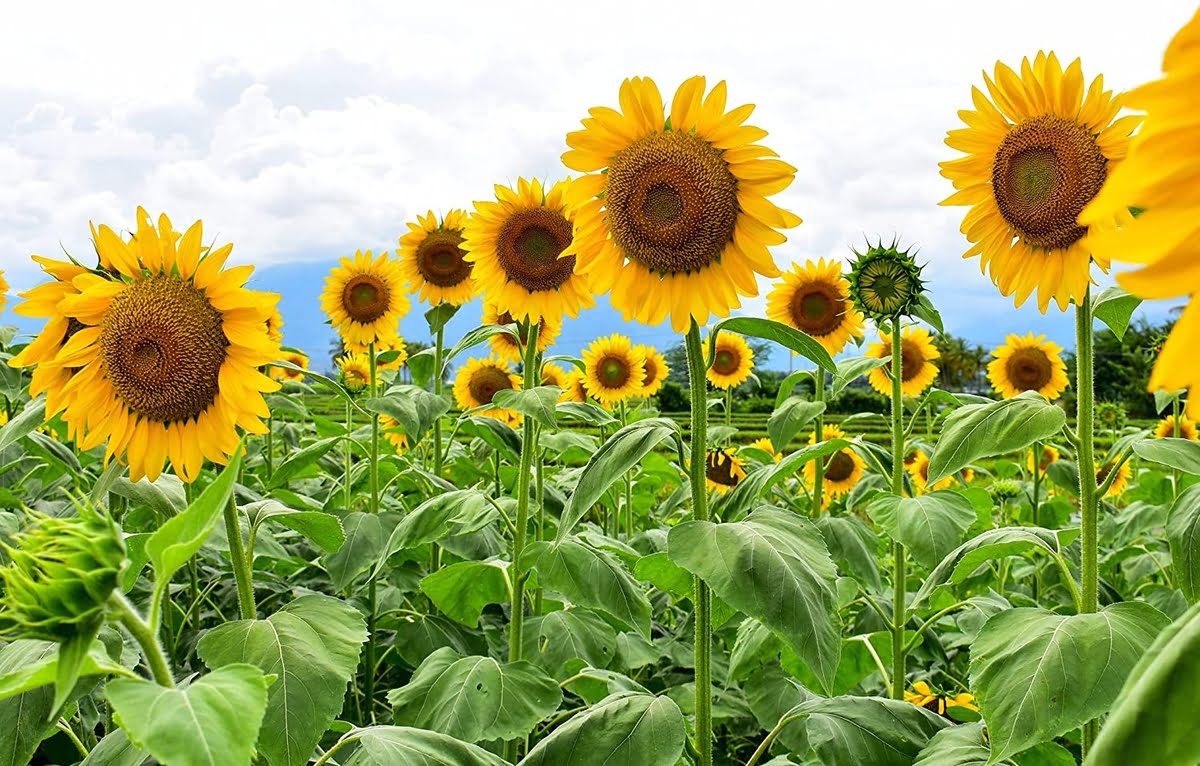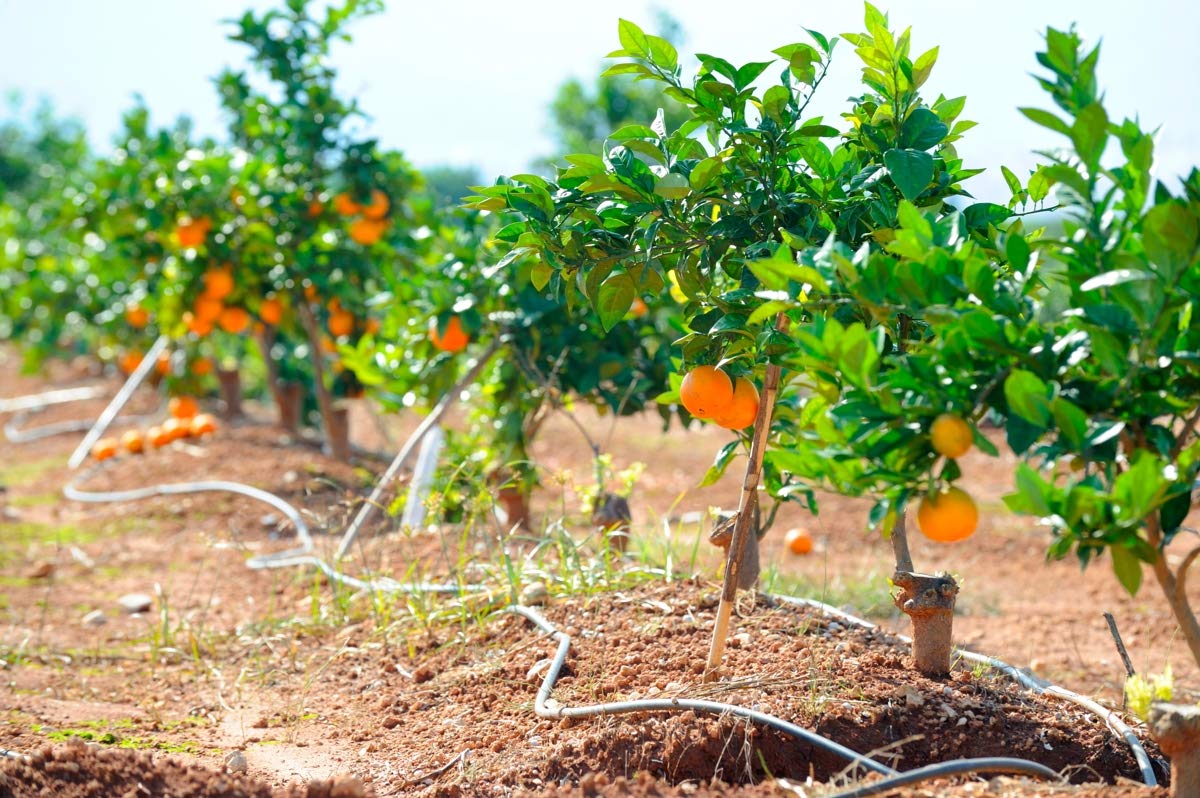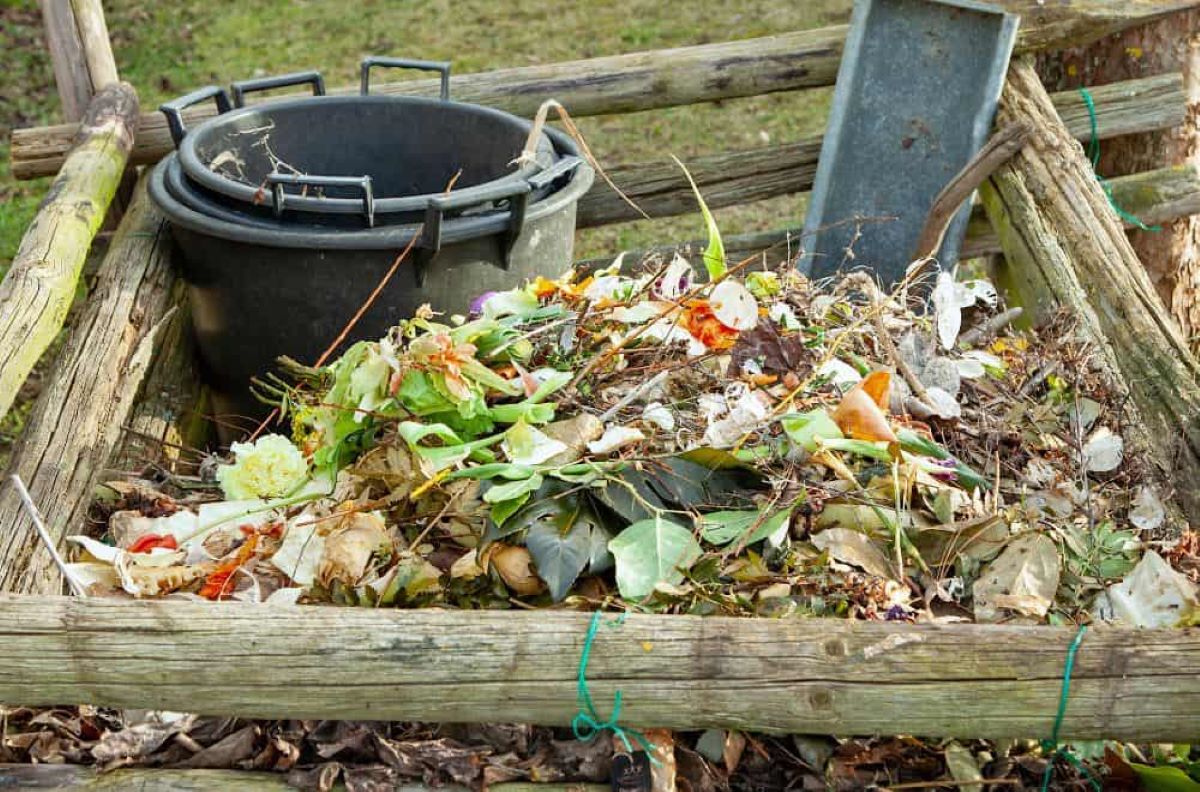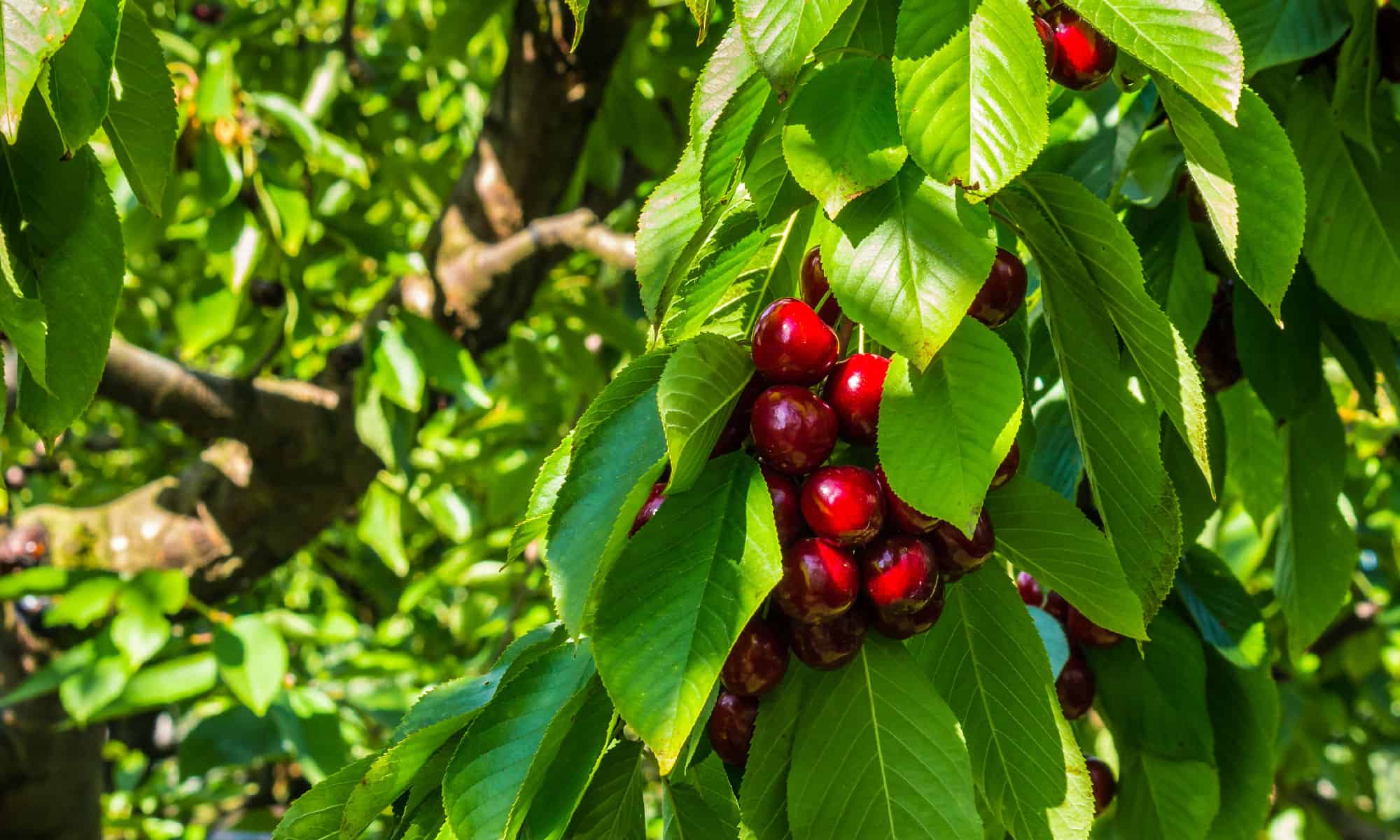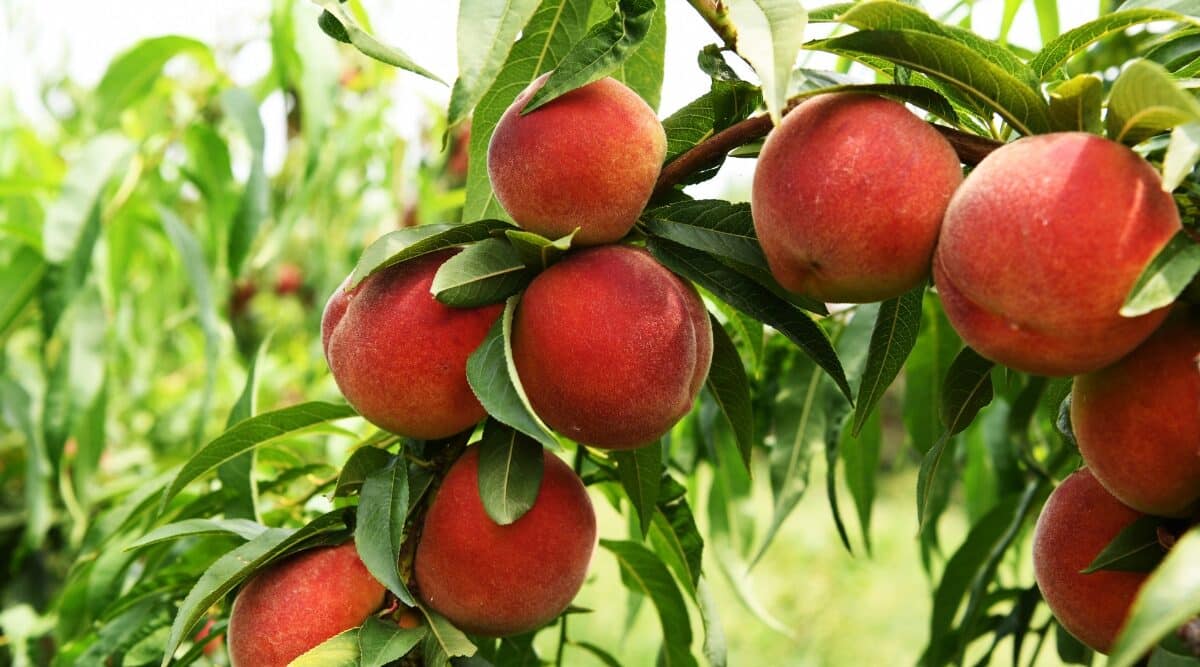Home>Gardening Techniques>Plant Care>How Long Does It Take Bonsai Trees To Grow
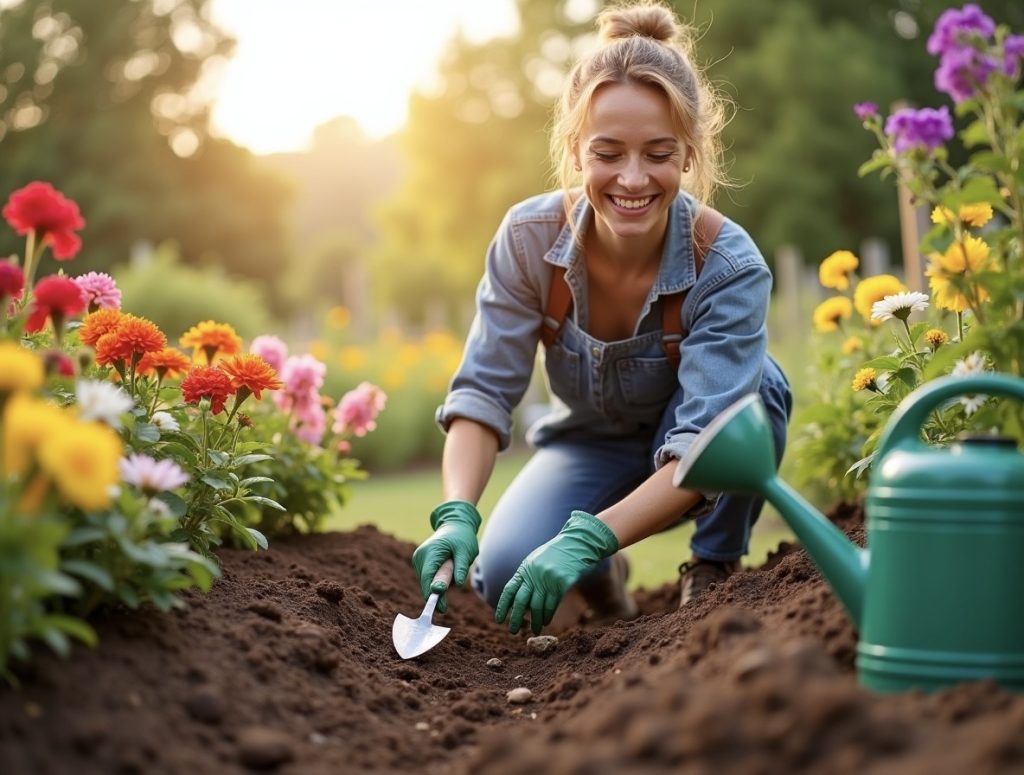

Plant Care
How Long Does It Take Bonsai Trees To Grow
Modified: February 9, 2024
Learn all about plant care for bonsai trees, including how long it takes for them to grow. Discover essential tips and techniques to help your bonsai thrive.
(Many of the links in this article redirect to a specific reviewed product. Your purchase of these products through affiliate links helps to generate commission for Chicagolandgardening.com, at no extra cost. Learn more)
Table of Contents
Introduction
Welcome to the enchanting world of bonsai trees! Bonsai is the art form of growing and nurturing miniature trees in containers, creating visual representations of nature’s grandeur in a small scale. These living sculptures require meticulous care and attention to detail in order to thrive and maintain their beautiful appearance.
If you are new to the world of bonsai, you may be wondering: how long does it take for bonsai trees to grow? Well, the answer to that question is not a simple one. The growth rate of bonsai trees can vary significantly depending on several factors, including the species of tree, the size of the tree at purchase, growing conditions, and the pruning and training techniques applied.
In this article, we will delve into the different factors that can affect the growth rate of bonsai trees, providing you with a better understanding of the time and effort required to cultivate these miniature masterpieces. So, let’s explore the fascinating journey of bonsai tree growth together.
Factors Affecting Bonsai Tree Growth
Several factors play a crucial role in the growth and development of bonsai trees. Understanding these factors will help you create the optimal environment for your bonsai and assist you in achieving the desired growth rate. Let’s take a closer look at some of the key factors that influence the growth of bonsai trees.
- Species of Tree: Each species of bonsai tree has its own unique growth characteristics. Some species, such as the Juniper or Japanese Maple, have faster growth rates compared to others like the Black Pine or Azalea. It’s essential to research and select a tree species that aligns with your desired growth speed and overall aesthetic goals.
- Size of the Tree at Purchase: The size of the bonsai tree at the time of purchase also influences its growth rate. Generally, smaller bonsai trees require more time to grow and develop compared to larger, more mature specimens. Keep in mind that younger trees have the potential to be molded into various styles and shapes, while older trees may already have a defined form.
- Growing Conditions: Providing the right growing conditions is crucial for the healthy growth of your bonsai. Factors such as light levels, temperature, humidity, and airflow all impact the tree’s growth. Most bonsai trees thrive in a sunny spot with filtered light, consistent temperatures, and appropriate levels of humidity. Monitoring and adjusting these conditions accordingly will promote optimal growth and development.
- Pruning and Training Techniques: Pruning and training are essential practices in bonsai cultivation. Regular pruning helps maintain the desired size and shape of the tree while encouraging new growth. Likewise, proper training techniques, such as wiring or bending branches, help create the characteristic bonsai aesthetics. By employing these techniques effectively, you can control and manipulate the growth rate of your bonsai.
- Fertilization and Nutrients: Bonsai trees require a balanced diet of nutrients to support healthy growth. Fertilizing your bonsai regularly with a suitable bonsai-specific fertilizer provides essential nutrients, promoting vigorous growth and overall plant health. However, it is crucial to follow the recommended dosage and application instructions to prevent over-fertilization, which can be detrimental to the tree.
By considering these factors and implementing appropriate care practices, you can greatly influence the growth rate of your bonsai tree. Remember, each tree is unique, and finding the right balance of care and attention is essential to ensure its long-term success.
Species-Specific Growth Rates
When it comes to bonsai trees, different tree species have distinct growth rates. Some species are known for their relatively fast growth, while others have a slower pace. Understanding the growth characteristics of specific species can help you plan and manage the growth of your bonsai effectively. Let’s explore several common bonsai tree species and their respective growth rates.
- Juniper (Juniperus spp.): Junipers are popular tree species for bonsai cultivation due to their relatively fast growth rate. With proper care and maintenance, these trees can exhibit significant growth within a few seasons. It is important to stay on top of pruning and training requirements with Juniper bonsai to maintain their desired shape.
- Japanese Maple (Acer palmatum): Japanese Maples are known for their slow to moderate growth rate, making them ideal for creating intricate, finely detailed bonsai trees. Patience is key when cultivating Japanese Maple bonsai, as it may take several years to achieve the desired aesthetic. However, the wait is often rewarded with stunning foliage and graceful branches.
- Black Pine (Pinus thunbergii): Black Pine bonsai are revered for their rugged and aged appearance. These trees have a relatively fast growth rate, allowing them to develop a picturesque silhouette within a few years. Regular pruning and training are essential to maintain the desired shape and proportion of Black Pine bonsai.
- Azalea (Rhododendron spp.): Azaleas are known for their vibrant and showy flowers. These delicate trees have a moderate growth rate, striking a balance between steady growth and the maintenance of their compact size. Regular pruning and proper fertilization will promote healthy growth and abundant blooms in Azalea bonsai.
- Chinese Elm (Ulmus parvifolia): Chinese Elm bonsai is a popular choice for beginners due to its relatively fast growth rate and forgiving nature. With proper care, these trees can grow rapidly, allowing for quicker development and styling. Chinese Elm bonsai generally respond well to pruning and training techniques.
It is important to note that these growth rates are general guidelines and can vary depending on the specific conditions and care provided to each individual bonsai tree. Some species may require more time and attention to achieve the desired growth and aesthetics. Patience, observation, and adjustment of care practices will help you navigate the growth journey of your bonsai tree while appreciating the unique qualities of each species.
Size of the Bonsai at Purchase
The size of a bonsai tree at the time of purchase can significantly affect its growth rate and development. When shopping for a bonsai, you will come across various sizes, ranging from small starter trees to larger, more established specimens. Understanding the implications of the tree’s size on its growth will help you make an informed decision and set realistic expectations. Let’s explore how the size of a bonsai at purchase influences its growth rate.
Smaller bonsai trees, often referred to as starter trees or pre-bonsai, typically have a slower growth rate compared to larger, more mature trees. These smaller trees are generally younger and still in the early stages of development. As a result, they require more time and attention to grow and develop into full-fledged bonsai trees.
On the other hand, larger bonsai trees, also known as advanced or specimen trees, have already undergone significant growth and development before reaching the market. These trees often have a more established root system and a refined, mature appearance. Due to their larger size, they may have a faster growth rate compared to smaller bonsai trees.
When purchasing a smaller bonsai tree, it is important to note that it will require additional patience and care to nurture it into the desired shape and size. Regular pruning, training, and re-potting are necessary to guide the tree’s growth and create the desired aesthetic. With proper care and attention, smaller bonsai trees can develop into stunning creations over time.
On the other hand, larger bonsai trees offer a head start in terms of size and visual appeal. They already possess a defined structure and can be enjoyed immediately. However, it is crucial to continue with regular maintenance and care practices to ensure the continued health and growth of the tree.
Ultimately, the decision to purchase a smaller or larger bonsai tree depends on your preference and level of involvement in the growth process. Smaller trees offer the opportunity for a more hands-on experience, allowing you to witness and shape the tree’s growth from its early stages. Larger trees, on the other hand, offer instant gratification and the enjoyment of a more developed bonsai right from the start.
Regardless of the size of the bonsai at purchase, patience and dedication are key to nurturing its growth and creating a stunning miniature tree that brings beauty and serenity to your home or garden.
Growing Conditions
The growing conditions in which you cultivate your bonsai tree play a crucial role in its growth rate and overall health. Providing the optimal environment will encourage strong growth and ensure the tree thrives for years to come. Let’s explore the key aspects of growing conditions that impact the growth of bonsai trees.
Light: Adequate light is essential for the photosynthesis process, which fuels the growth of bonsai trees. Most bonsai trees thrive in a location with bright, filtered light. The exact light requirements can vary depending on the species, so it’s important to research the specific needs of your bonsai tree. If the tree is indoors, consider placing it by a south-facing window or providing artificial lighting to supplement natural light.
Temperature: Bonsai trees have temperature preferences that influence their growth rate. Generally, most bonsai species thrive in moderate temperatures between 60°F and 75°F (15°C-24°C). Avoid extreme temperature fluctuations or exposing the tree to freezing conditions, as this can stress or damage the tree. Providing a stable and suitable temperature environment will support healthy growth.
Humidity: Bonsai trees, especially those native to humid regions, appreciate higher levels of humidity. In arid or dry climates, it may be necessary to increase humidity around the bonsai tree. This can be achieved by placing the bonsai on a humidity tray filled with water or using a humidifier. Alternatively, misting the leaves can also help raise humidity levels temporarily.
Airflow: Good air circulation is vital for the health of your bonsai tree. Stagnant air can promote the growth of fungi or pests, which can hinder the tree’s growth. Ensure that the bonsai is not placed in a closed or poorly ventilated space. Outdoor bonsai trees generally benefit from the natural airflow, while indoor bonsai may require occasional exposure to fresh air.
Watering: Proper watering is crucial for the growth and development of bonsai trees. The key is to maintain a balance, neither overwatering nor letting the tree dry out excessively. Water the bonsai thoroughly when the topsoil starts to feel slightly dry, ensuring that water reaches the entire root ball. Adjust the watering frequency based on the season, humidity levels, and specific tree species.
Soil and Pot: Using the right soil mix and potting is essential for the growth of bonsai trees. Bonsai soil should provide adequate drainage while retaining some moisture to ensure proper root health. Additionally, the size of the pot affects the growth rate as it limits the space for the roots to expand. Repotting the bonsai at appropriate intervals allows for healthy root development and continued growth.
By creating an environment that meets the specific needs of your bonsai tree, you can enhance its growth rate and ensure its overall well-being. Regular monitoring, adjustment, and care will help you provide the optimal growing conditions for your bonsai tree to flourish.
Pruning and Training Techniques
Pruning and training techniques are essential aspects of bonsai cultivation that directly influence the growth and aesthetics of the tree. These practices help shape and maintain the desired form and proportions of the bonsai, ultimately creating a miniature masterpiece. Let’s explore some common pruning and training techniques that promote healthy growth and enhance the beauty of bonsai trees.
Pruning: Regular pruning is a fundamental practice in bonsai cultivation. It involves selectively removing branches, leaves, or buds to control the tree’s size, shape, and overall structure. Pruning encourages new growth and helps maintain the desired aesthetic. It is important to use sharp, clean tools and make precise cuts to minimize stress and limit the risk of infection or damage to the tree. Remember to prune your bonsai during the appropriate season for each specific species.
Pinching: Pinching is a technique used to control the growth and shape of new shoots and buds. By gently pinching the soft, new growth between your fingers, you can stimulate back-budding and encourage the development of finer branches and dense foliage. Pinching is commonly used with deciduous bonsai trees, such as maples or elms.
Wiring: Wiring is a technique that involves wrapping a flexible wire around branches to shape and position them. The wire helps guide the growth of the branches, allowing you to create elegant and dynamic shapes. It is important to choose the appropriate thickness and strength of wire and monitor it closely to prevent it from cutting into the bark. Wiring is generally done during the tree’s dormant period to minimize any potential damage.
Clipping and Trimming: Clipping and trimming techniques involve the removal or shortening of specific leaves, needles, or small branches to refine the tree’s appearance. By strategically removing excess foliage, you can enhance the overall balance and proportion of the bonsai. Clipping and trimming are typically performed throughout the year as needed to maintain the desired shape and density of the tree’s foliage.
Defoliation: Defoliation is the practice of removing all or a significant portion of the tree’s leaves. This technique is used primarily with deciduous trees and is performed during specific periods of the growth cycle. Defoliation stimulates new growth and helps create finer branching and denser foliage. It is important to follow proper defoliation techniques and provide additional care to ensure the tree’s health during the recovery period.
Training and Styling: Training involves shaping the trunk, branches, and overall structure of the bonsai to create the desired style and aesthetic. This can include techniques such as bending branches, carving deadwood, or creating jin and shari (stripped or exposed wood). Training requires patience, as it often takes several seasons or years to achieve the desired result. It is essential to consider the natural growth patterns and characteristics of the tree species when training and styling your bonsai.
Pruning and training techniques are ongoing practices in bonsai cultivation. Regular attention to these techniques will not only shape the growth of the tree but also refine its aesthetics over time. By mastering these techniques and understanding their application on different tree species, you can create exquisite bonsai trees that showcase the beauty and artistry of nature.
Fertilization and Nutrients
Fertilization is a vital aspect of bonsai care that provides the necessary nutrients for healthy growth and development. Bonsai trees, confined to small pots, rely on regular fertilization to replenish essential elements that may become depleted over time. Understanding the importance of proper fertilization and the specific nutrient requirements of bonsai trees will help you achieve optimal growth and vibrant foliage. Let’s delve into the world of fertilization and nutrients for bonsai trees.
The Role of Nutrients: Bonsai trees require a balanced intake of essential nutrients which include macronutrients such as nitrogen (N), phosphorus (P), and potassium (K), as well as micronutrients like iron (Fe), manganese (Mn), and zinc (Zn). These nutrients play vital roles in various physiological processes, including photosynthesis, root development, and overall plant health. Ensuring a proper nutrient balance is crucial for the well-being of your bonsai tree.
Fertilizer Types: Bonsai-specific fertilizers are formulated to provide the necessary nutrients in the correct proportions suitable for bonsai cultivation. These fertilizers often have different formulations depending on the growth phase of the tree (e.g., spring, summer, fall). Organic fertilizers, such as compost or manure, can also be used to provide slow-release nutrients. It is important to choose a fertilizer that matches the specific needs of your bonsai tree species.
Fertilizer Application: Proper application of fertilizer is essential to avoid over-fertilization, which can damage the bonsai tree. Follow the instructions provided with the fertilizer to determine the appropriate dosage and frequency of application. In general, a balanced fertilizer can be applied every four to six weeks during the growing season, reducing frequency during the dormant period. Ensure the soil is moist before applying fertilizer to prevent root burn.
Fertilizer Techniques: There are various techniques you can employ to optimize fertilizer uptake and distribution. Top-dressing is a technique where you sprinkle small granules of fertilizer on the surface of the soil. This allows the nutrients to be absorbed gradually as watering occurs. Foliar feeding involves spraying a diluted fertilizer solution directly onto the leaves, allowing for direct nutrient absorption. Be sure to follow proper dilution ratios and avoid applying fertilizer in extreme temperatures or direct sunlight.
Observation and Adjustment: Monitoring the response of your bonsai tree to fertilization is important to determine if any adjustments are needed. Too much or too little fertilizer can result in nutrient deficiencies or toxicity. Watch for signs such as yellowing leaves, stunted growth, or excessive foliage growth, which may indicate an imbalance in nutrient uptake. Adjust fertilizer application and nutrient proportions accordingly to maintain a healthy balance.
Fertilization is a continuous process throughout the life of a bonsai tree. By providing the appropriate nutrients in the correct proportions, you can enhance the vigor, color, and overall health of your bonsai. Regular observation, adjustment, and experimentation will help you fine-tune your fertilizer regime to ensure optimal growth and long-term vitality of your bonsai tree.
Patience is Key in Bonsai Tree Growth
When it comes to bonsai tree cultivation, patience is an essential virtue. Growing a bonsai tree is a process that requires time, dedication, and a deep understanding of the tree’s unique growth characteristics. As bonsai enthusiasts, we must embrace the concept that these miniature trees are not meant to grow as quickly as their full-sized counterparts. Let’s explore why patience is key in bonsai tree growth and why it is so rewarding in the end.
Slow and Deliberate Growth: Bonsai trees have been trained and shaped to exhibit the grace and elegance of much larger trees in a compact form. Achieving the desired aesthetics of a bonsai takes time and careful cultivation. Their growth is deliberately slowed through pruning, root control, and careful maintenance. This deliberate approach allows the tree to develop strong, proportionate branches and dense foliage, contributing to the distinctive bonsai appearance.
Artistic Evolution: Bonsai cultivation is a dynamic and ever-evolving process. As the bonsai grows and matures, its appearance changes over time. Branches thicken, foliage becomes more refined, and the tree’s overall character deepens. Like a work of art, the evolution of a bonsai tree can be appreciated and admired as it progresses, often surpassing the original vision. Patience allows for the full expression of the tree’s artistic potential.
Building a Relationship: Growing a bonsai tree cultivates a unique bond between the caretaker and the tree. This relationship is built on patience and attentive care. The slow growth of the tree fosters a sense of anticipation and wonder as you observe its progress over the years. Each season brings changes and new growth, strengthening the connection between you and your bonsai.
Learning and Adaptation: Patience in bonsai cultivation allows for a deep understanding of the tree’s unique characteristics and needs. It offers an opportunity to learn and experiment with different techniques, styles, and care approaches. As you patiently observe and adapt your care practices to the specific growth patterns of your bonsai, you enhance your knowledge and skill as a bonsai enthusiast.
The Beauty of Time: Bonsai trees embody the beauty of time. The subtle twists and turns of the branches, the weathered bark, and the delicate foliage all bear witness to the passage of time. By embracing patience, we appreciate the beauty that comes with the gradual transformation of a bonsai tree. It serves as a reminder to slow down, observe, and appreciate the natural processes that shape our world.
While it may be tempting to rush the growth of a bonsai tree, patience is essential to achieving the desired results. It allows us to fully appreciate the unique nature of these living artworks and the incredible journey of growth they undertake. With time, care, and patience, your bonsai tree will flourish, rewarding you with its beauty and becoming a testament to the power of patience in the art of bonsai cultivation.
Conclusion
Bonsai tree cultivation is a captivating and rewarding pursuit that requires a combination of artistic vision, horticultural knowledge, and patience. Understanding the various factors that affect bonsai tree growth, such as species-specific growth rates, the size of the tree at purchase, growing conditions, pruning and training techniques, and the importance of proper fertilization and nutrients, is crucial for successful bonsai cultivation.
Each factor plays a significant role in shaping the growth and development of a bonsai tree. Choosing a tree species with the desired growth rate, considering the size of the tree at purchase, and providing optimal growing conditions will lay the foundation for healthy growth. Meanwhile, the implementation of proper pruning and training techniques and the application of suitable fertilization methods will help shape the tree into a mesmerizing miniature masterpiece.
Throughout the journey of bonsai tree growth, patience truly becomes the key. Embracing the slow and deliberate growth of bonsai trees, appreciating their artistic evolution, building a bond with the tree, and continuously learning and adapting care practices are all part of the rewarding experience. Patience allows us to observe and marvel at each stage of the tree’s development, fostering a deep appreciation for the beauty of time and the transformative power of bonsai cultivation.
So, as you embark on your own bonsai journey, remember to approach it with patience, learn from each experience, and enjoy the process. With time and dedication, your bonsai tree will grow and flourish, becoming a testament to your skill and passion. Cultivating bonsai trees is not just about creating stunning living art; it is a journey of self-discovery, connection with nature, and lifelong admiration for the beauty that unfolds slowly and gracefully.
